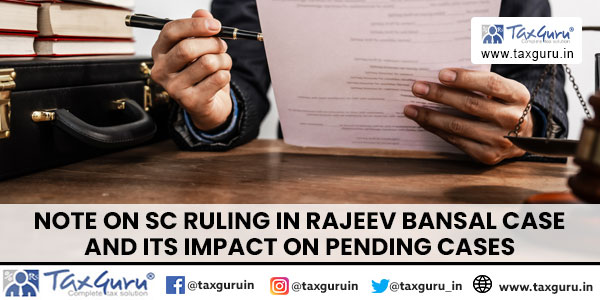Summary: On October 3, 2024, the Supreme Court delivered a significant judgment concerning reassessment under the Income Tax Act. The core issue was whether the Taxation Laws Amendment (TOLA) had any impact on the Income Tax Act after the amendments made by the Finance Act 2021. The Court ruled in favor of the department, confirming that reassessment notices issued between April 1, 2021, and June 31, 2021, for AY 2013-14 to AY 2018-19 would be considered valid, subject to certain conditions. The Court also introduced a new concept called the “Surviving Period,” which determines that notices issued after this period will be considered time-barred. This judgment could benefit assessees in various scenarios, including cases where tax demands have already been paid, appeals are pending before CIT-A or ITAT, or where decisions have already been made against the assessee.
We are aware that on 3rd October 2024, Honorable Supreme Court delivered an important decision in the field of Taxation on the subject of Reassessment under Income Tax Act.
Core issue involved in this case, for which the department took up / escalated the matter up to Apex Court was, “Whether TOLA has any applicability or bearing on the Income Tax Act, as it stood after various amendments were introduced into it by Finance Act 2021” & the Apex Court after making elaborate discussion on the same, has concluded / decided the issue in favor of the department.

Therefore, as a consequence of the same, it is now settled that all those notices for AY 2013-14 to AY 2018-19, issued between the period from 01.04.2021 to 31.06.2021 will be treated as valid notices subject to some conditions.
While doing so, The Apex Court has introduced a new concept called “Surviving Period” & has clearly stated that if the notice has been issued on a date which comes after Surviving Period then the same will be time barred
There are other interesting issues too that need a careful consideration like sanctions & approval after the ratio laid down by this judgement
After going through the decision carefully, and studying the material available on the same in public domain, it can be seen that there could be certain cases where the assessee is placed at advantage & can take benefit of the ratio laid down in this judgement
Some broad scenarios emerge now which could be as follows –
Scenario A – where re-assessment order has been already passed raising demand of tax + interest & the assessee has chosen to quietly pay the same
Scenario B – where reassessment order is passed, demand is raised, an appeal has been preferred with CIT-A against the said order & the same is pending till date either for hearing or for order to be passed
Scenario C – where reassessment order is passed, demand is raised, an appeal has been preferred with CIT-A against the said order & CIT-A too has decided the case against assessee, and the assessee has preferred appeal in ITAT & case is pending @ ITAT
Scenario D – where ITAT has passed the order in favor of department
In my humble view in each and every such case one needs to go through the facts & issues involved and ponder over, whether the ratio laid down by the Rajeev Bansal case can be applied to it & can be utilized to ones advantage, & if so, how to do it….





